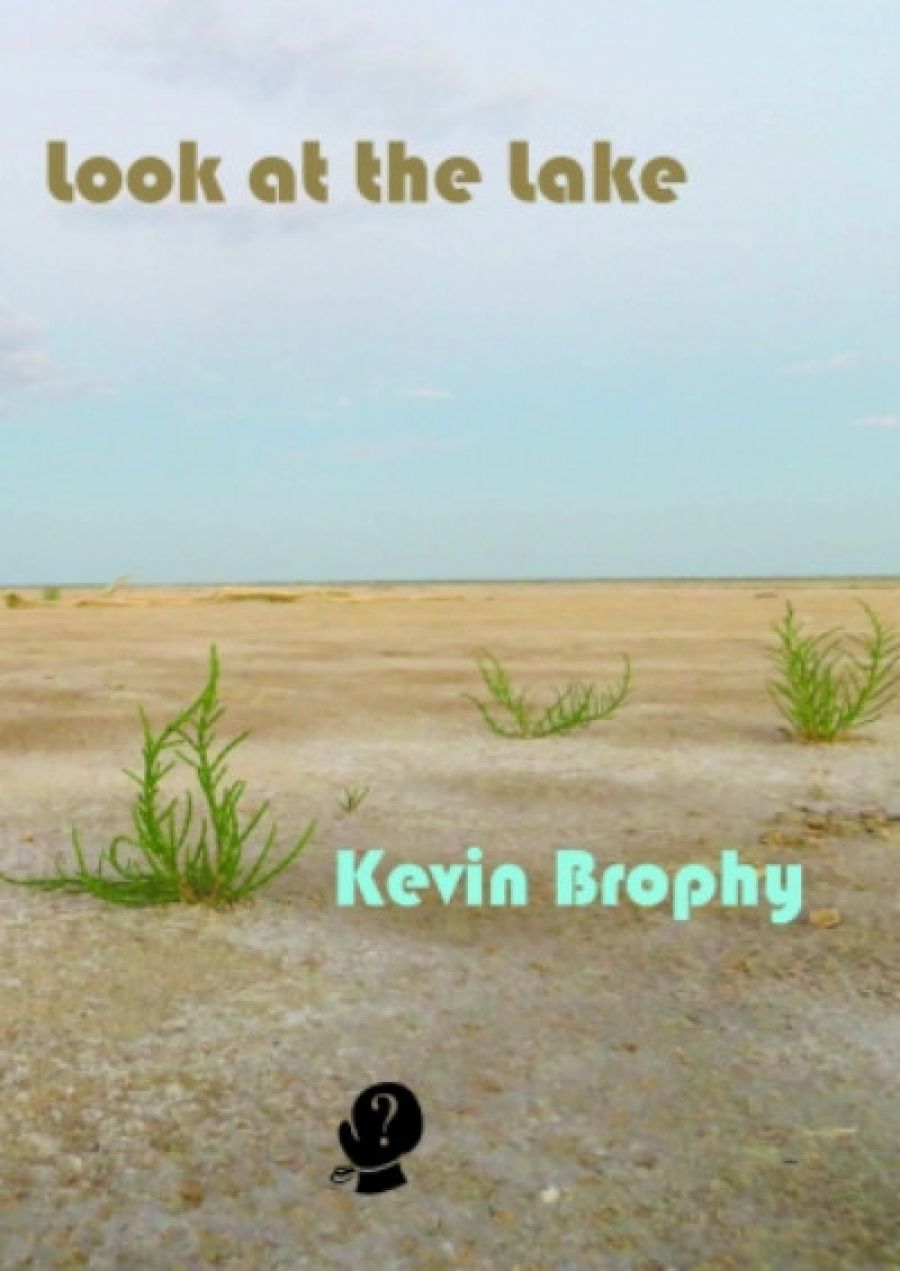
- Free Article: No
- Contents Category: Poetry
- Custom Article Title: Joan Fleming reviews 'Look at the Lake' by Kevin Brophy
- Review Article: Yes
- Online Only: No
- Custom Highlight Text:
Kevin Brophy’s latest book is a record of the year he spent living in the remote Aboriginal community of Mulan. The community is home to predominantly Walmajarri people, and is on the edge of the Great Sandy Desert, sixteen hours’ drive from Broome. He was given a decomposing house to ...
- Book 1 Title: Look at the Lake
- Book 1 Biblio: Puncher & Wattmann, $25 pb, 162 pp, 9781925780086
I haven’t visited Mulan, but I have spent time in other communities in the Tanami and Great Sandy Deserts. My copy of Look at the Lake is bookmarked with my Central Land Council permit from a recent trip to catch up with Warlpiri friends in Nyirrpi – that, and a stray piece of buffel grass that hitchhiked back to the city with me. In this book, I recognise the rhythms and pleasures of desert days that Brophy renders with enviable precision and beauty. The unreliable Toyotas, the curt, dismissive cockatoos, the languid kids in football jerseys, the frank storytelling, the endless driving round in circles chasing rumours of a family member’s whereabouts – a practice that anthropologist Yasmine Musharbash calls ‘hithering and thithering’ – and the slow, parsed, supremely isolated feeling of some days, where ‘time tucked away in a back pocket / holds its breath and closes its eyes / to the fear / it might never get going again’.
The poems in Look at the Lake, written at the rate of about one per day, have a beguiling daily quality. This is not a book to be admired as a rigorously selected collection of shining individual poems. Brophy himself admits in the introduction not all the poems are ‘fully formed’: ‘Some are closer to jotted notes, some are half-realised thoughts.’ Rather, the 162-page book has immense documentary value; the poems work cumulatively on the reader, bringing them close to Brophy’s clement vision of the beauty and the ragged realities of community life. Brophy offers a rare gift of insight into a context and a community that is often badly and partially represented, or altogether ignored.
Look at the Lake can be meaningfully located in a tradition of books by poets who have spent time living intimately in remote communities, including Billy Marshall-Stoneking’s Singing the Snake (1990), Lee Cataldi’s The Women Who Live on the Ground (1990), and Philip Hall’s Sweetened in Coals (2014). Unlike Marshall-Stoneking, however, Brophy does not attempt to transcribe or ‘poeticise’ dreaming stories – though few contemporary works of poetry would attempt this without a significant anthropological framework. And unlike Cataldi, Brophy avoids any explicit declaration of privilege or politics.
 Edge of the lake near Mulan (Photo supplied by Kevin Brophy)
Edge of the lake near Mulan (Photo supplied by Kevin Brophy)
The harder truths of community life are always tempered with expressions of hope and humour. The weirdly democratic violence that arises from the listlessness of community life – ‘Yes, they break into whatever’s locked …Who are they? / It’s everyone, I guess’ – is rendered carefully by emphasising the continuation of Aboriginal law. However, these adjectives – listlessness, violence – are much harder than what Brophy allows himself. A poem about Walmajarri children attending school, and a meditation on their attendant futures, uses the language of ‘promise’ and ‘possibility’. The inverse is carefully avoided. There are poems that grieve for, say, the beetles that throw themselves against the walls, but the larger griefs are harder to put down.
Brophy’s avoidance of hard statements is understandable. In my own experience, these realities – the bewilderments of camp life, the curious dysfunction of the white service providers, and the paradoxical realities of Aboriginal people caught between the languages, practices, and infrastructures of two very different cultures – repel judgement, if honestly and openly observed. The potent complexity of community life repels paraphrase. For me, imagining what shape the future of these communities might take is a depleting exercise, and an exercise in extreme self-reflexivity.
 Local women of Mulan leading a search for bush foods (Photo supplied by Kevin Brophy)
Local women of Mulan leading a search for bush foods (Photo supplied by Kevin Brophy)
For communities where the inhabitants are painfully aware that their life expectancy is measurably less than the rest of Australia, and the rates of incarceration and disease distressingly higher, a meditation on the future inevitably veers towards thoughts of improvement, advancement, and progress. However, these are inscribed values of mainstream Australian society, which have their roots in the colonial project of displacement, a project that viewed the seemingly inexhaustible tracts of the Australian continent as a blank canvas on which to inscribe a promise of manifest destiny. These values begin to fragment and dissolve when we hold them up against the communities of countrypeople who are still fighting for their right to be different, to remain different.
Rather than futures, then, this is a book of presences. It may not risk telling the harder truths, but it does risk hope. It is a beautifully observed book of poems that has real value as a portrait of community life painted by a verified master.


Comments powered by CComment